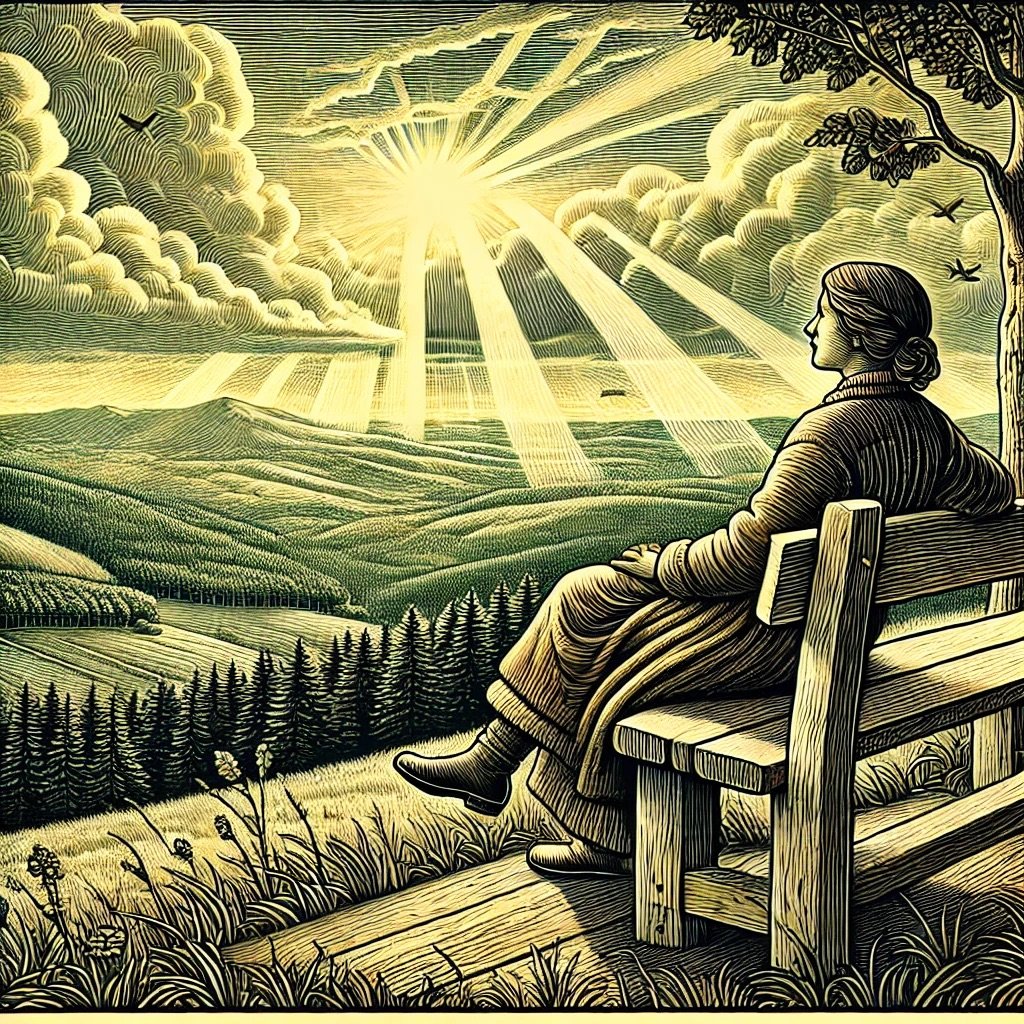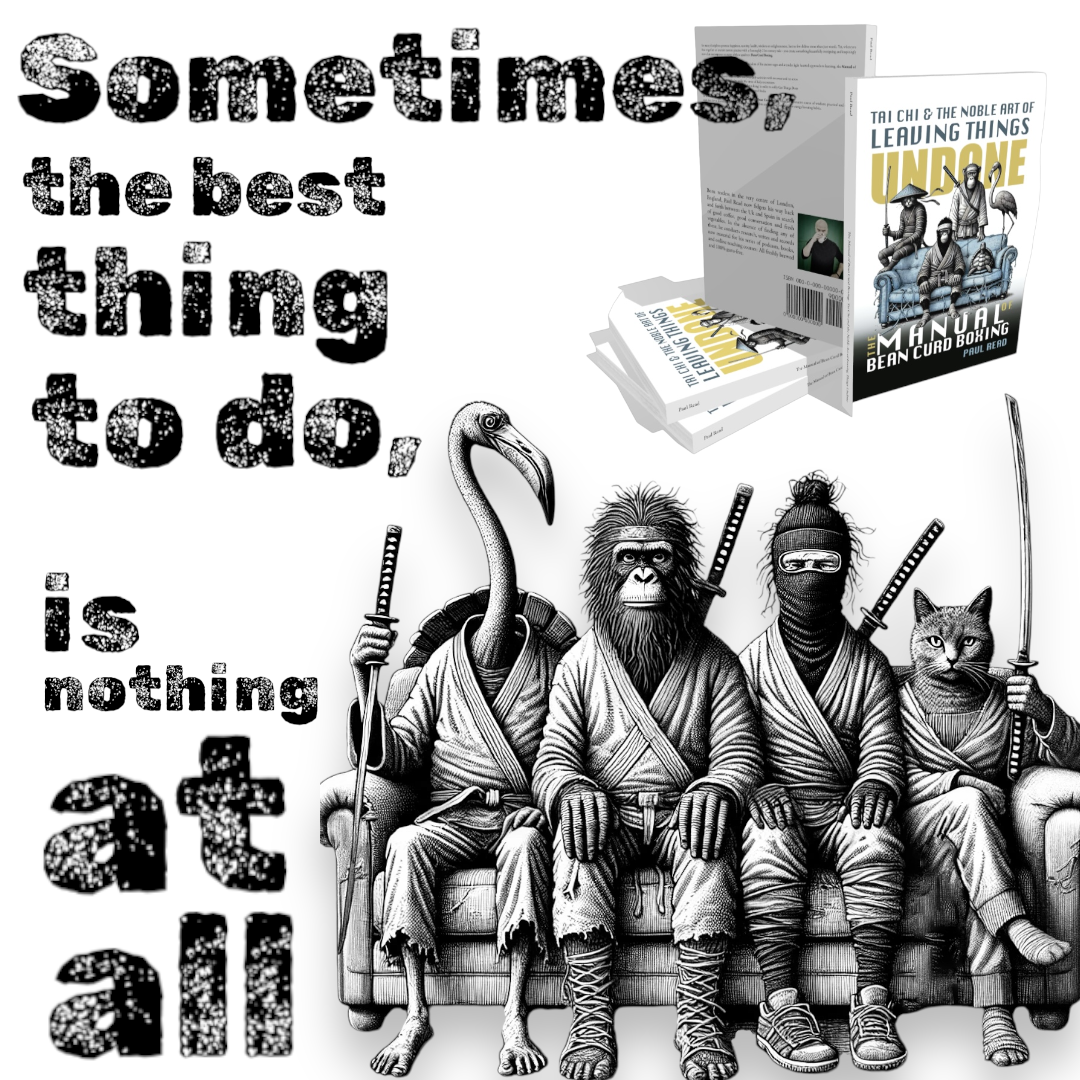RETURNING TO THE BASICS
So often we get carried away in Tai Chi with the perceived need to learn. more: another style, another form, another application, another series of qigong, another push hands technique…. Listen to the full ramblings of the mOnk with the audio below, or read on for a summary on how by doing so, we might be missing out on the important stuff.
Stripping Back the Essentials of Tai Chi (summary of audio)
It’s a warm autumn afternoon, and as I sit here looking over a calm but slightly windy bay, I find myself reflecting once again on the principles behind Tai Chi. After decades of teaching and practicing, you might think there’s nothing left to say. In a way, that’s true—there isn’t anything more to add. But what remains important isn’t adding more, but learning to say and do less.
When I first began studying Tai Chi all those years ago, I was focused on acquiring as much as I could—learning forms, mastering styles. I dove into Lam style, Wu Dan, the Beijing forms, Chen Man Ching variations, and then the student variations for further detail. I toyed with the idea of picking up the sabre after the straight sword, learning the 108 forms after the 63, and so on. Each new form felt like a certificate, a marker of expertise, something I could tuck under my belt to demonstrate my growing knowledge.
But over time, I found myself practicing fewer and fewer of them. It wasn’t because they lacked value, but because I came to realize that the depth I sought wasn’t in the quantity of forms I knew, but in the quality of my connection to even just one. It doesn’t matter whether it’s a 2000-step form or a 20-step form, with a sword or without. The essential value of Tai Chi lies in stripping everything back—just like peeling an onion—to find the core.
Learn the Sword because there is a beauty and elegance in this form, not found in other tai chi forms - but don't learn it, merely to add another line to your Tai Chi CV.
The Taoist philosophy that underpins Tai Chi teaches us to reduce, to remove unnecessary layers until only the essentials remain. Yet, many of us are caught up in the drive to acquire more forms, more skills, as if our practice is about accumulation rather than simplification. This acquisition mindset runs contrary to the deeper lessons of Tai Chi.
So the lesson is…
And heres the thing: Everyone I have ever taught has always wanted to focus on the basics, the essence, the fundamentals. But as a teacher, I got bored, so kept introducing new variations, new exercises, new weapons. When all my students wanted was the opportunity to understand better what they were already learning.
Sometimes…
We need to remember to stop doing so much and just be still, be quiet and in this stillness we open to the things that are important.
You don’t need endless variations to prove your skill or deepen your practice. What you need is to focus on the one form or practice you love and return to it, again and again. Through this repetition, you will uncover more than you could by constantly seeking new techniques or forms. The real treasure is in the refinement, the distillation of practice, not the accumulation.
Tai Chi isn’t about uncovering profound philosophical insights or martial prowess in every movement of the wrist or step of the foot. The true challenge lies in reducing everything to the simplest elements—grounding, breath, rooting, and harmony of movement.
Take stepping, for instance. Can you step without shifting your weight prematurely? Can you shift your weight from one foot to the other, pausing at any point without creeping forward or losing balance? If you can do that, you’ve achieved something remarkable. It may sound simple, but it’s a challenge that will test you throughout your life.
Stop when you need to
Step, and in stepping be part of each movement, conscious, aware, with breath… then let it go.
And it’s not just about mastering this when you’re young, at 25 or 35. It’s about carrying this lightness of being when you’re 77 or older. It’s about maintaining that continuity of movement, that softness and fluidity, well into your later years. Those are the real tests of Tai Chi—the ones that don’t come with certificates or applause but with personal growth and lifelong learning.
Delve into the art of doing less
Or even, doing nothing at all.
So, don’t get distracted by the allure of more—more forms, more techniques, more external validation. Instead, pick one thing that resonates with you, and stick with it. Keep exploring it, not to find something new but to deepen your connection to the fundamentals.
Tai Chi offers endless challenges, but they all boil down to simple truths: breath, balance, movement, and harmony. These are the gifts that will sustain you throughout your practice and life.
What do you think? Is less more or is more, simply more? Leave a comment below…




